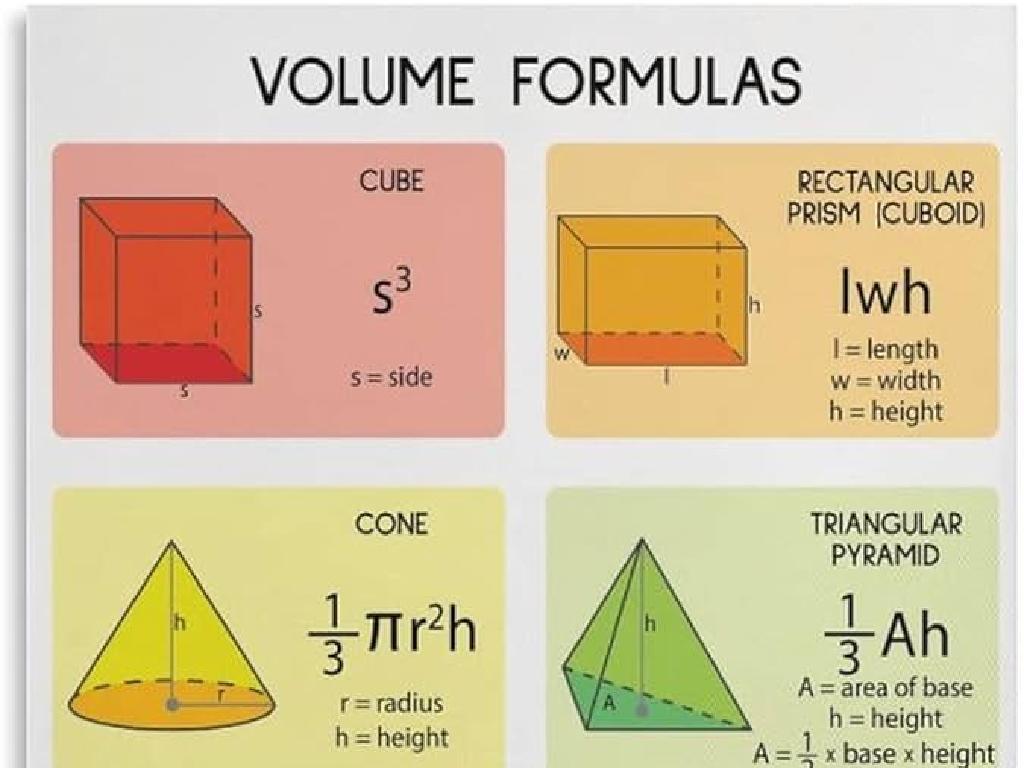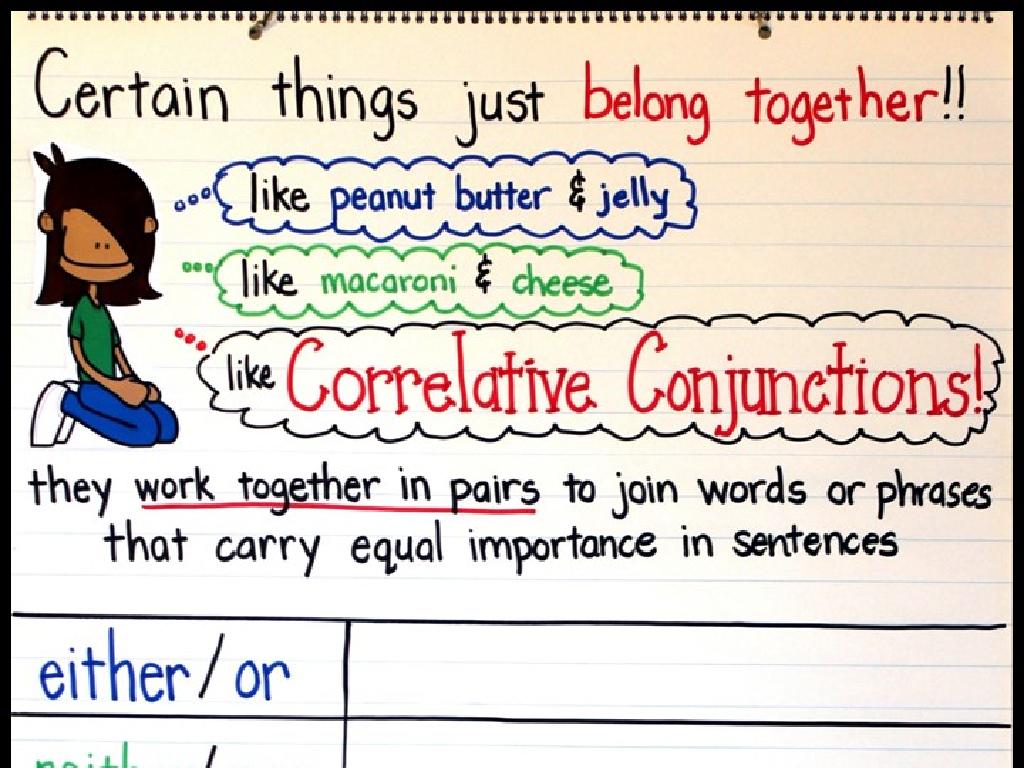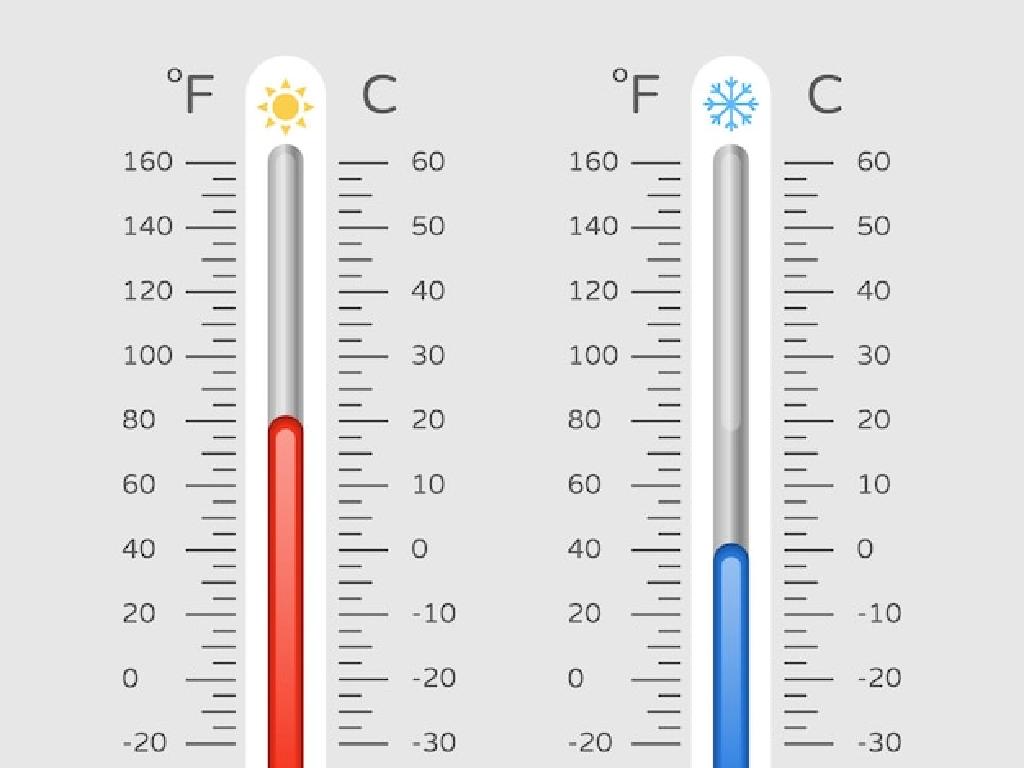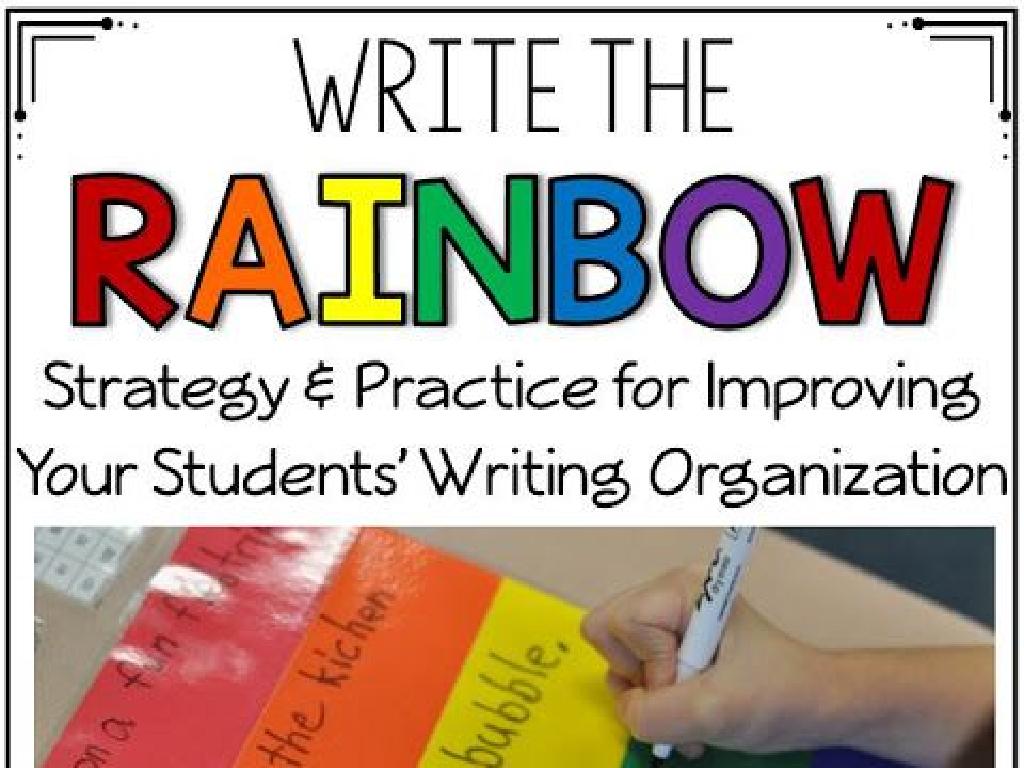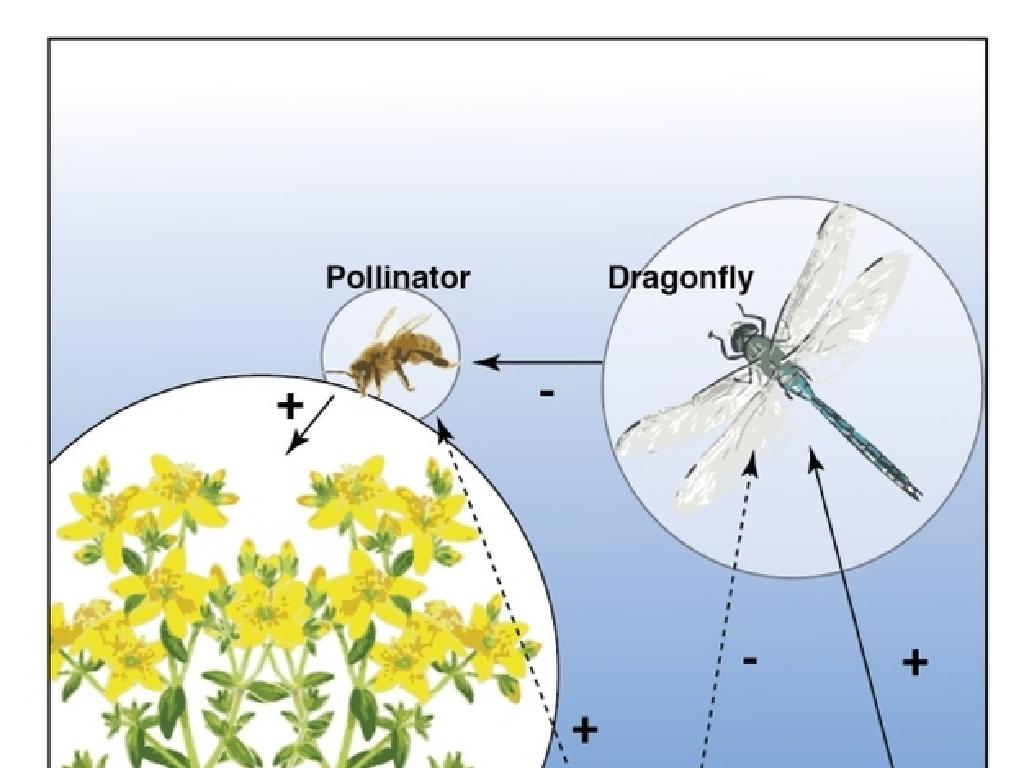Writing Numbers Up To 100 In Words - Convert Words To Digits
Subject: Math
Grade: Second grade
Topic: Names Of Numbers
Please LOG IN to download the presentation. Access is available to registered users only.
View More Content
Welcome to Numbers: Writing up to 100
– Learning to write numbers 1-100
– Reading numbers in word form
– ‘Twenty-four’ is written as 24
– Converting words to digits
– How to change ‘eighty-one’ to 81?
– Practice with examples
– Use examples like ‘thirty-two’ = 32
|
This slide introduces second graders to the concept of writing and reading numbers up to 100 in word form. Start by explaining that numbers can be written in two ways: as digits (like 1, 2, 3) and in words (like one, two, three). Emphasize the importance of recognizing both forms, as it is a skill they will use in everyday life. Demonstrate how to convert from word form to digits, and vice versa, using clear examples. Provide practice opportunities with a variety of numbers to ensure students become comfortable with the conversion process. Encourage students to ask questions if they’re unsure about how to write or read a number.
Writing Numbers 1 to 20 in Words
– Learn to spell numbers 1 to 20
– One, two, three, up to twenty
– Practice writing numbers as words
– Write ‘fourteen’ instead of ’14’
– Convert words back to digits
– What number is ‘seventeen’? It’s 17!
– Fun activities to reinforce learning
– Games like ‘number word bingo’ or ‘match-up’
|
This slide introduces students to the concept of writing numbers in word form, which is a foundational skill in mathematics and literacy. Start by going through the numbers 1 to 20, ensuring students can both recognize and spell each number. Engage the class with practice exercises where they write the word form of numbers and convert written words back to digits. Incorporate interactive activities such as bingo or matching games where students pair digits with their corresponding word forms. These exercises will help solidify their understanding and make the learning process enjoyable.
Tens and Beyond: Exploring Numbers 30 to 100
– Understanding the ‘tens’
– ‘Tens’ are numbers like 30, 40, 50, each a group of ten ones
– What follows 29? The number 30!
– After 29, we add one more to get 30, which is three tens
– Recognizing patterns in tens
– Each ‘ten’ has a pattern: 30 is three tens, 40 is four tens, and so on
– Practice writing numbers in words
– Write 30 as ‘thirty’, 40 as ‘forty’. Let’s try more together!
|
This slide introduces the concept of ‘tens’ and the pattern they follow, which is foundational for understanding place value and number structure. Start by explaining that after 29 comes the number 30, which is the first of the ‘tens’ beyond twenty-nine. Highlight the pattern that each ‘ten’ represents a group of ten ones, and this pattern repeats with every new ten. Engage the students in recognizing the pattern and practice writing the numbers 30, 40, 50, etc., in words. Encourage them to count by tens to see the pattern and use visual aids like number charts if possible. For homework, ask them to write numbers 30 to 100 in words and bring to the next class for review.
Writing Numbers 21 to 99 in Words
– Understanding numbers 21 to 99
– Numbers between 21 and 99 have two parts.
– Combining tens and ones
– The first part is the tens, and the second part is the ones.
– Forming numbers in words
– Write the tens word like ‘thirty’ and add the ones word like ‘four’ to make ‘thirty-four’.
|
This slide aims to teach second-grade students how to write numbers from 21 to 99 in words. Start by explaining that these numbers are made up of two parts: the tens place and the ones place. Use examples to show how each part corresponds to a word, and how these words are combined to form the written number. For instance, the number 47 is written as ‘forty-seven’, combining ‘forty’ (the tens place) and ‘seven’ (the ones place). Encourage students to practice with different numbers and provide them with a chart or list of the words for tens (twenty, thirty, forty, etc.) and ones (one, two, three, etc.) to help them memorize and understand the concept.
Writing Numbers in Words
– Practice writing numbers as words
– Use hyphens for numbers 21-99
– Hyphens connect tens and ones, like sixty-seven
– Examples: ‘thirty-four’, ‘seventy-two’
– ‘twenty-one’ not ‘twenty one’ or ‘twentyone’
– Let’s write numbers together!
|
This slide is designed for a practice activity where second-grade students will learn to write numbers in word form. Emphasize the use of hyphens for compound numbers between twenty-one and ninety-nine. Provide clear examples on the board and then ask students to try writing numbers on their own. For the activity, you can have students write numbers on a whiteboard, in their notebooks, or on flashcards. Consider breaking the class into small groups and have each group work on a range of numbers. Encourage students to help each other and to check their work for hyphens and correct spelling. This hands-on practice will help solidify their understanding of writing numbers in word form.
Converting Words to Digits
– Writing ‘thirty-two’ in digits
– ‘thirty-two’ is written as 32
– Practice changing words to numbers
– We’ll turn word numbers like ‘forty-five’ into 45
– Understanding place value
– Tens and ones make up numbers like ‘sixty’ (60) and ‘three’ (3)
– Fun with number words!
|
This slide is aimed at helping second graders understand how to convert written numbers into their digit form. Start by explaining that each part of the written number corresponds to a place value in digits. For example, ‘thirty-two’ combines ‘thirty’ (which represents 3 tens or 30) and ‘two’ (which represents 2 ones or 2), making 32. Use several examples to practice this concept, ensuring to cover different combinations of tens and ones. Engage the students with interactive activities where they can write down numbers in words and then convert them into digits. This will help solidify their understanding of place value and the relationship between written and numerical representations of numbers.
Let’s Play a Matching Game!
– Match words to digits
– Connect ‘twenty-five’ to ’25’
– Pair up for the game
– Find a classmate to work with
– Aim for the most correct matches
– Keep score of correct answers
– Have fun learning numbers!
|
This slide introduces a classroom activity designed to help second-grade students practice converting written number words into their corresponding digits. The game encourages collaboration by having students work in pairs, which can help them learn from each other. Teachers should prepare sets of cards with number words on one set and digits on the other. During the activity, monitor the pairs to provide guidance and ensure understanding. After the game, review the matches as a class to reinforce learning. Possible variations of the activity could include a timed challenge, a competition between pairs, or having students create their own number word and digit cards.
Class Activity: Number Word Bingo
– We’re playing Number Word Bingo!
– Listen for number words called out
– Find the matching digit on your Bingo card
– Get five in a row to win!
|
This activity is designed to help students recognize and convert number words to their digit form. Prepare Bingo cards in advance with a random selection of numbers up to 100. Call out the number words randomly and have students mark the corresponding digit on their cards. The first student to align five numbers horizontally, vertically, or diagonally wins the game. Possible variations of the game could include: 1) Reverse Bingo, where digits are called out and students must find the word, 2) Blackout Bingo, where the goal is to cover all numbers on the card, 3) Four Corners Bingo, where students aim to cover the four corner numbers on their cards. This game encourages active listening, number recognition, and peer interaction.
Wrapping Up: Numbers in Words
– Excellent work on number words!
– Keep practicing with Bingo at home
– Use your Bingo cards to match digits to words
– Next lesson: Adding numbers to 100
– We’ll explore how to add two-digit numbers
– Keep up the great learning!
|
Congratulations to the class for mastering the conversion of numbers up to 100 into words. It’s important to reinforce this skill through practice, so encourage students to use their Bingo cards at home to continue learning in a fun way. This will help solidify their understanding and prepare them for the next lesson, which will involve adding numbers up to 100. Make sure to acknowledge their hard work and progress to keep them motivated. For the next class, prepare materials that will help students visualize addition, such as number lines or counters.

